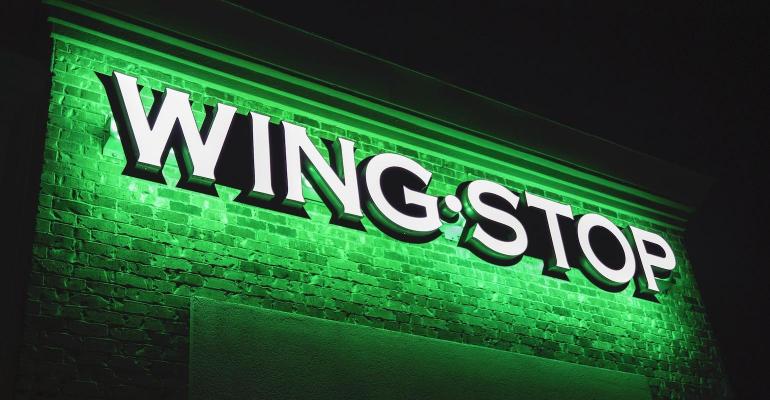Wingstop Inc. maintained its digital and delivery mix into the second year of the pandemic as it dealt with higher wing prices, staffing challenges and other economic factors, executives said Wednesday.
The Dallas-based quick-service brand released earnings for the third quarter ended Sept. 25 and said same-store sales in the period rose 3.9% at domestic units compared to 2020 and 29.3% compared to 2019.
Charles Morrison, Wingstop CEO and chairman, said the brand was able to retain its digital mix and also grow its delivery sales.
“Those are counter to what the trend has been in the marketplace as people go back out and [are] dining in somewhere,” Morrison said on a third-quarter analyst call. “We've seen our business continue to not only grow but also to see the mix shift, working to our advantage.”
Delivery sales in the third quarter were 27.2%, he said, about three percentage points higher than a year ago. Those digital sales also carry a check average about $5 higher than other transactions, Morrison noted.
Delivery marketplace prices are about 15% above those in the store, he said, “which is a good indicator of consumer tolerance for that pricing.” Wingstop has partnered with DoorDash as its delivery provider.
The Wingstop executive said the brand plans another price hike before the end of the year, bringing the total increases for the year to about 10%, to offset increases in wing costs and labor pressures.
“I think there's a window right here where we can deal with some of these price hikes, to follow the real inflation that's out there,” Morrison said. “From our perspective, this is necessary obviously to combat the inflation especially on the on the wage side.”
As part of the brand’s efforts to use the “whole bird,” the company in September moved its Thighstop offerings to the main menu.
“We've always believed we have sufficient pricing power in the brand and have historically been on a cadence of one to two points a price per year consistently baked into the to the P&L of the brand,” Morrison said.
“This environment we're in, which we don't believe is transitory in any way, shape or form, is driving the need to take price where consumers are willing to adopt that,” he said. “We're seeing it across the board. This will be a level set for the future, perhaps, and we will revert back to our cadence. … We're going to look at strategies where we can take more control of the situation.”
While many brands have complained of supply-chain problems, Morrison said Wingstop has only seen it impact restaurant development with slight delays.
“We have a very, very standardized footprint,” he said. “We tend to forward-buy a lot of our equipment.” Microchip shortages have impacted some equipment, especially for point-of-sale systems, he said, but delays are short term, perhaps a couple of weeks.
“We're putting everything in place to make sure we mitigate that, including leveraging our balance sheet if needed to secure more equipment and have that available to us on the supply-chain side,” Morrison said.
In labor, Wingstop said it has seen high turnover numbers, which “puts some pressure on the training side of the business,” Morrison said.
“The good news for our brand is the high off-premises mix, the efficiency inside the four walls, tends to insulate us from having any sort of meaningful negative impact on the guest experience, since we're not serving in a dining room,” he said.
For the third quarter ended Sept. 25, Wingstop’s net income rose to $11.3 million, or 38 cents a share, from $10.1 million, or 34 cents a share, in the prior-year period. Revenues increased to $65.8 million from $64 million in the same quarter last year.
As of Sept. 25, Winstop had 1,673 restaurants systemwide. That included 1,493 restaurants in the United States, of which 1,461 were franchised restaurants and 32 were company-owned, and 180 franchised restaurants in international markets. The company opened 49 restaurants in the third quarter.
Morrison said the company remained excited about the international potential for this brand, especially in markets like the United Kingdom, where “those restaurants are doing very well with average unit volumes exceeding $2 million.”
Other markets are beginning to emerge from the pandemic as well. “Mexico, for example, is a market that is now starting to approach their 2019 level volumes on the top line,” Morrison said. “They opened nine restaurants this year, when they were probably one of the hardest hit with the pandemic.”
The brand’s first store is scheduled to open in 2022 in Toronto, opening the Canada market, and another area of focus will be China, which was set back in development eight to 12 months because of the pandemic, Morrison said.
Contact Ron Ruggless at [email protected]
Follow him on Twitter: @RonRuggless





